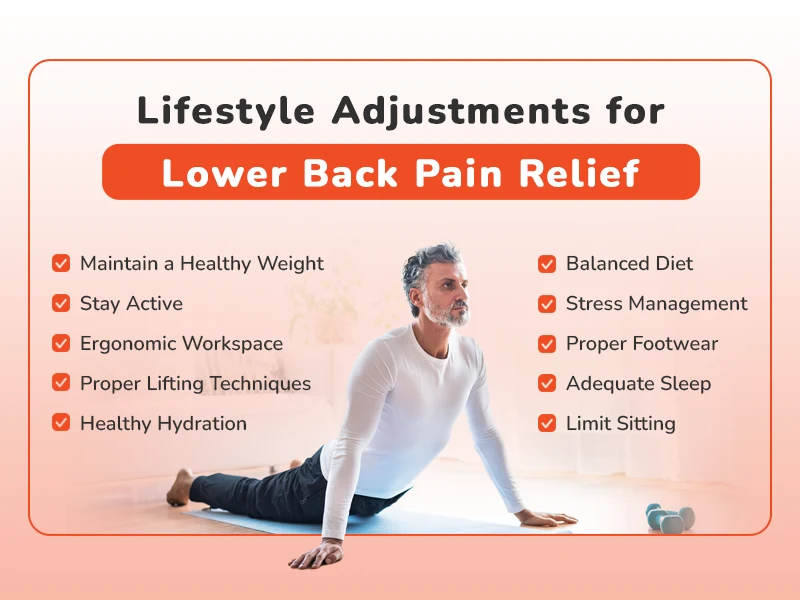Managing Lower Back Pain with Back Braces: Tips and Techniques
Living with lower back pain can be challenging, but the right strategies can offer relief and improve your daily life. Back braces are valuable tools in managing lower back pain, providing support and stability to the lumbar region. In this comprehensive guide, we’ll explore effective techniques for managing lower back pain with back braces, from choosing the right brace to wearing it correctly for optimal results. Discover how these supportive devices can make a significant difference in your journey to a more comfortable and pain-free life.
Understanding Lower Back Pain
Lower back pain is a common and debilitating condition caused by various factors such as muscle strains, herniated discs, arthritis, and poor posture. Regardless of its origin, lower back pain can significantly impact an individual’s mobility, sleep quality, and overall well-being. One effective solution to manage and alleviate this discomfort is using back braces, specialized devices designed to provide targeted support to the lower back, offering relief and promoting healing.
Understanding that lower back pain can affect people of all ages, from young adults to seniors, is essential. It can result from a wide range of causes, including muscle overuse, injuries, age-related spine changes, or underlying medical conditions like arthritis or sciatica. The pain associated with lower back issues can vary in intensity, including dull aches, sharp stabbing sensations, or additional symptoms like numbness and tingling. Back braces are crucial in providing support and comfort to individuals with lower back pain. In the following sections, we’ll explore the types of back braces available, their benefits, and guidance on selecting the right one to effectively address specific lower back pain needs.
Choosing the Right Back Brace
A well-chosen back brace can be valuable when managing lower back pain. These braces are designed to provide targeted support to the lower back, helping alleviate discomfort and promote healing. Lower back pain can result from various factors, including muscle strains, herniated discs, arthritis, or poor posture. It can significantly impact your daily life, affecting your mobility, sleep quality, and overall well-being.
Selecting the right back brace is essential, as it can make a substantial difference in your comfort and pain relief. Various back braces are available, each catering to specific needs and conditions. Whether you’re dealing with acute or chronic lower back pain, choosing the right brace that suits your unique situation and lifestyle is crucial. Consulting with a healthcare professional or orthopedic specialist can provide expert guidance, ensuring you select a back brace that effectively addresses your lower back pain and helps you regain mobility and quality of life.
Wearing Your Back Brace Correctly
Wearing your back brace correctly is key to experiencing its full benefits in managing lower back pain. After selecting the appropriate brace, it’s important to ensure it fits snugly but not too tight. Following the manufacturer’s instructions for proper positioning and use is essential. When worn correctly, a back brace can provide the necessary support to reduce pain and discomfort in the lower back.
Proper fit and positioning are critical to the effectiveness of the back brace. If the brace is too loose, it may not provide adequate support, while if it’s too tight, it can lead to discomfort and potentially worsen your condition. Be sure to adjust the straps or closures according to the manufacturer’s guidelines and consult with your healthcare provider if you have any concerns about wearing the brace correctly. By wearing your back brace as recommended, you can help alleviate lower back pain and support the healing process, ultimately improving your overall quality of life.
Tips for Managing Lower Back Pain
In addition to wearing a back brace for managing lower back pain, several techniques and habits can be effective in alleviating discomfort and promoting healing:

- Maintain Good Posture: Proper posture is crucial for reducing strain on your lower back. Whether sitting at a desk or standing for extended periods, pay attention to your posture to avoid unnecessary stress on the back muscles.
- Exercise Regularly: Engage in low-impact exercises that focus on strengthening your core muscles and improving flexibility. Consult a physical therapist or fitness professional to develop a personalized exercise plan tailored to your needs.
- Apply Heat and Cold: Both heat packs and cold compresses can be valuable tools for managing acute pain in the lower back. Alternating between hot and cold treatments can relieve and reduce inflammation as needed.
- Lift Properly: When lifting objects, especially heavy ones, remember to bend at the knees and use your legs to lift rather than relying on your back. Avoid twisting your body while lifting, which can strain your lower back.
- Stay Hydrated: Proper hydration is essential for maintaining spinal health. It helps to keep the intervertebral discs adequately hydrated, which, in turn, supports overall back health.
By incorporating these tips and techniques into your daily routine, you can complement the use of a back brace and take a proactive approach to managing lower back pain. Additionally, consulting with a healthcare provider or specialist can provide valuable insights into your specific condition and help you develop a comprehensive pain management plan.
Read More: Back Support Solutions: Improving Posture and Reducing Pain in Daily Living
Benefits of Back Braces
Back braces offer a range of benefits for individuals dealing with lower back pain:
- Pain Reduction: One of the primary functions of back braces is to provide targeted compression and support to the lower back, effectively reducing pain and discomfort associated with various conditions.
- Improved Posture: Some back braces promote better posture by preventing slouching or excessive lower back arching. This can be particularly helpful for individuals who spend long hours sitting or standing.
- Enhanced Mobility: Back braces stabilize the lumbar region, which can lead to improved mobility. This enhanced mobility makes it easier to perform daily activities and maintain an active lifestyle.
- Support During Recovery: A back brace can support the affected area if you’re recovering from a lower back injury or surgery. Stabilizing and protecting the back can facilitate healing and reduce the risk of further injury.
By effectively addressing these key areas, back braces contribute to managing lower back pain, allowing individuals to lead more comfortable and active lives. However, it’s essential to work with a healthcare professional to determine the right type of back brace and usage plan for your specific condition.
Lifestyle Adjustments for Lower Back Pain Relief
In addition to using back braces for lower back pain relief, making specific lifestyle adjustments can significantly improve your overall well-being and comfort. Here are some practical tips and changes you can implement to reduce discomfort and promote healing:

- Maintain a Healthy Weight: Carrying excess weight can strain your lower back. If you’re overweight, gradual weight loss through a balanced diet and regular exercise can alleviate some of this pressure.
- Stay Active: Regular, low-impact exercises can strengthen the muscles supporting your lower back and improve flexibility. Consider activities like walking, swimming, or yoga, and consult a physical therapist for a tailored exercise plan.
- Ergonomic Workspace: If you have a desk job, ensure your workspace is ergonomically designed to promote good posture. Use an adjustable chair with proper lumbar support, keep your computer screen at eye level, and take short breaks to stretch and move.
- Proper Lifting Techniques: When lifting objects, always bend at the knees and use your legs to lift rather than your back. Avoid twisting while lifting, and ask for assistance if an object is heavy or awkwardly shaped.
- Healthy Hydration: Staying adequately hydrated supports spinal health by maintaining the water content in the intervertebral discs. Aim to drink an appropriate amount of water throughout the day.
- Balanced Diet: Eating a well-balanced diet rich in fruits, vegetables, whole grains, and lean proteins provides essential nutrients for overall health and supports your body’s healing processes.
- Stress Management: Chronic stress can exacerbate lower back pain. Practice stress-reduction techniques such as meditation, deep breathing, or mindfulness to help manage stress levels.
- Proper Footwear: Wear supportive shoes with good arch support and cushioning. Avoid high heels or shoes that don’t provide adequate support, as they can contribute to lower back strain.
- Adequate Sleep: Ensure quality sleep by creating a comfortable sleep environment and establishing a consistent sleep routine. A good night’s sleep is essential for the body’s healing and recovery processes.
- Limit Sitting: Prolonged sitting can strain the lower back. If you have a sedentary job, try to stand, stretch, or walk around for a few minutes every hour to relieve pressure on the lumbar region.
By incorporating these lifestyle adjustments into your daily routine, you can complement the use of back braces and work toward achieving more effective relief from lower back pain. Always consult a healthcare professional or orthopedic specialist for personalized guidance on managing your condition.
Consultation with Healthcare Providers
Effectively managing lower back pain often involves collaborating with healthcare professionals who can provide guidance, treatments, and recommendations tailored to your condition. Learn how consulting with healthcare providers can be essential to your lower back pain management plan.
Conclusion
Incorporating a back brace into your lower back pain management plan can significantly improve your comfort and quality of life. Consult with a healthcare professional to determine the most suitable brace for your needs and follow the recommended guidelines for usage. With the right approach, you can effectively manage lower back pain and enjoy a more pain-free and active lifestyle, allowing you to engage in the activities you love and experience greater overall well-being. Don’t let lower back pain hold you back; take proactive steps today to enhance your lower back health and vitality.

